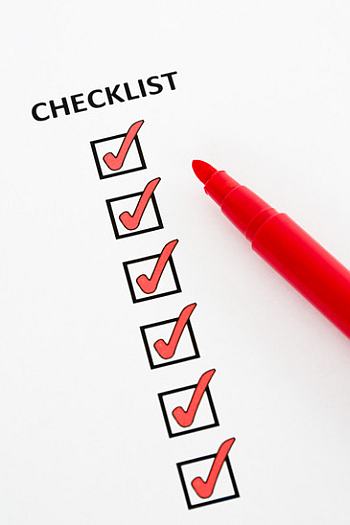Identity Theft Checklist – 10 Things You Can Do To Protect Your Identity Right Now
 Protecting your identity is not a passive choice. Instead, you must actively work toward protecting it. As one of the fastest growing crimes, identity theft can happen to anyone.
Protecting your identity is not a passive choice. Instead, you must actively work toward protecting it. As one of the fastest growing crimes, identity theft can happen to anyone.
Over 400,000 Americans are affected each year, and thanks to so much information being readily available online, identity theft is becoming easier. Thankfully, there are effective ways to protect your identity, starting now.
Keep this identity theft checklist form on hand to remind you of what you can be doing to protect yourself each day. If you would like more advice and tips to stay safe, click here.
1. Change Passwords Every 30 Days, Avoid Personal Data
As much as you may love the fact that your browser automatically saves your password, this small convenience makes your accounts more vulnerable. Instead, make it a habit to change your passwords every 30 to 60 days. Also, don’t use personal information that can be easily identified such as birth dates, addresses or social security numbers. Fortunately, many websites are upping their security and forcing people to change their passwords regularly.
2. Review Financial Statements, Inc. Bank & Credit Card Statements
If you’re like many people, you probably sign onto your accounts, pay your bill and sign back out. Since many people no longer receive paper statements, it’s harder to catch red flags. Make it a priority to not just pay your bills each month, but to inspect your statements. When you catch a problem early on, it’s easier to fix. Use a checklist to prevent identity theft and look for such things as unauthorised purchases and bank fees.
3. Check Your Credit Report Regularly
If you asked people on the street what their credit card score was, many wouldn’t be able to answer. Going years without knowing this information is dangerous; someone could be using your identity without you knowing. You’re entitled to one free credit report each year, so use the opportunity to check all of your credit scores. For a reliable source, use AnnualCreditReport.com in the USA or CreditExpert.co.uk in the UK.
4. Get a Credit Monitoring Service
In addition to scanning your own credit report once a year, you should also have a credit monitoring service. This new way of protecting your identity is effective as it alerts you when there is fraudulent activity detected on your account. Since this service detects activity early on, it cuts the losses.
5. Use Caution on Social Networks
Maybe you love to post photos of your children on Facebook or share your work information on LinkedIn. Yet doing so comes at a cost. Identity thieves can easily collect the information they need from these accounts, and a new target is children. Your checklist to protect you against identity theft should be the same for your children. Don’t display your child’s full name or birth date, and limit information of your own. Another thing you shouldn’t post? If and when you’re out of town.
6. Create Separate Email Accounts
Even though it may seem like a hassle, it’s best to create separate email accounts for work and personal use. That way, if one of the accounts is hacked into, it won’t affect everything. Having separate email accounts also minimises damages since you’ll have parts of your life separate from each other.
7. Shred ALL Documents Containing Sensitive Information
If you don’t own a paper shredder, get one. It’s important that all sensitive documents are shredded and not just ripped up or tossed in the trash. While all documents can be potential uses for identity theft, some of the most common include pre-approved credit card applications and bill statements.
8. Lock Down Your Phone
Basically everything that an identity thief would need to steal your identity would be on your smartphone. Many of us use banking and financial apps and have sensitive information stored on our phones. The best step is password protect your phone so that anyone who picked it up would have to enter in the password to access data. Also be careful when on Wi-Fi networks or when using Bluetooth technology.
9. Switch to Smart Cards
Although they aren’t that popular in the U.S. just yet, smart cards are the future. These cards take the place of credit or debit cards and have a proactive approach. There is a microchip stored in them and you have to enter in a unique PIN, which is difficult to counterfeit. Talk to your bank or credit card company about making the switch to cards that have an EMV chip.
10. Update Anti-virus Software
The newest version of anti-virus software should be installed on your computer, and you can check by opening up your program and scanning for updates. Also make sure that the sites you’re on are secure by looking for the “https” in the URL bar. Unsecured sites should be avoided, and you should only download games and programs from trusted sources.
Final Thoughts…
As a final thought to wrap this article up if you would like to take more preventative measures you may want to also consider looking into some sort of identity theft protect. In fact one of best Identity theft programs on the market right now is the Identity Guard Total Protection Plan.
If you would like to learn more you can check out my review here and get 2 weeks free for checking them out.
